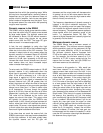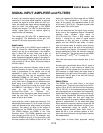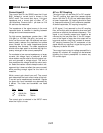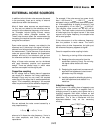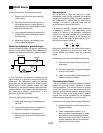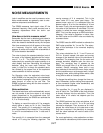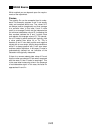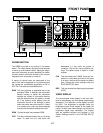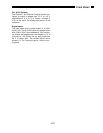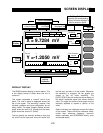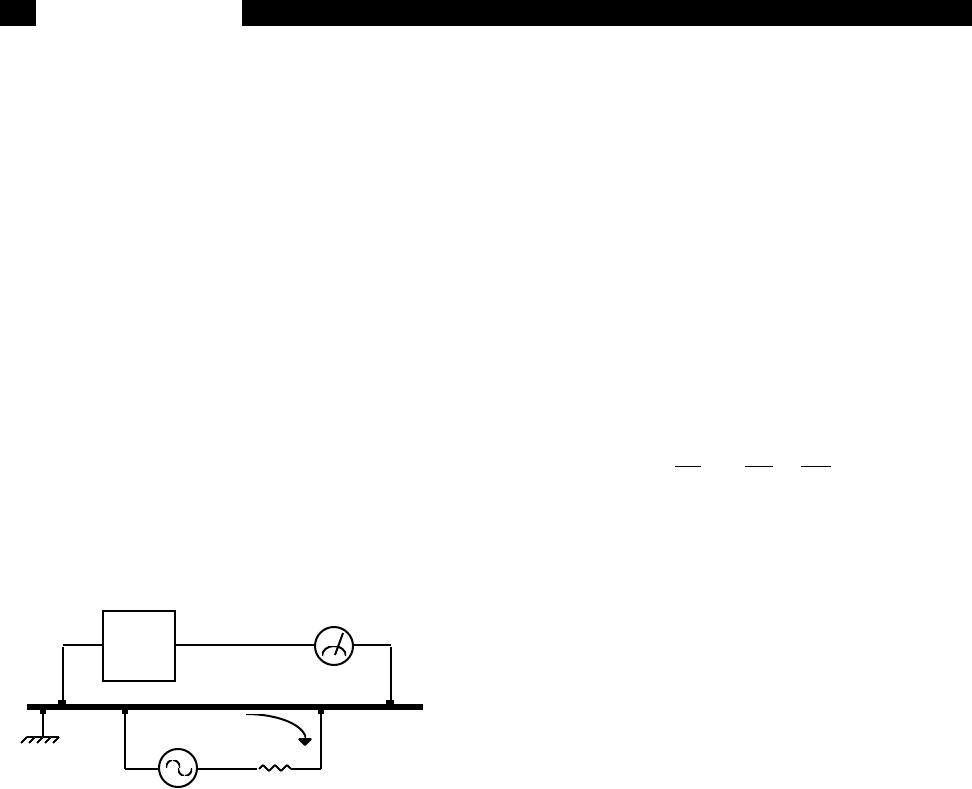
3-26
SR850 Basics
Cures for inductively coupled noise include:
1) Removing or turning off the interfering
noise source.
2) Reduce the area of the pick-up loop by
using twisted pairs or coaxial cables, or
even twisting the 2 coaxial cables used in
differential connections.
3) Using magnetic shielding to prevent the
magnetic field from crossing the area of
the experiment.
4) Measuring currents, not voltages, from
high impedance detectors.
Resistive coupling or ground loops
Currents flowing through the ground connections
can give rise to noise voltages. This is especially a
problem with reference frequency ground currents.
In this illustration, the detector is measuring the
signal relative to a ground far from the rest of the
experiment. The experiment senses the detector
signal plus the voltage due to the noise source's
ground return current passing through the finite
resistance of the ground between the experiment
and the detector. The detector and the experiment
are grounded at different places which, in this
case, are at different potentials.
Cures for ground loop problems include:
1) Grounding everything to the same physi-
cal point.
2) Using a heavy ground bus to reduce the
resistance of ground connections.
3) Removing sources of large ground cur-
rents from the ground bus used for small
signals.
Detector
Noise Source
Experiment
I(t)
Microphonics
Not all sources of noise are electrical in origin.
Mechanical noise can be translated into electrical
noise by microphonic effects. Physical changes in
the experiment or cables (due to vibrations for
example) can result in electrical noise over the
entire frequency range of the lock-in.
For example, consider a coaxial cable connecting
a detector to a lock-in. The capacitance of the
cable is a function of its geometry. Mechanical
vibrations in the cable translate into a capacitance
that varies in time, typically at the vibration fre-
quency. Since the cable is governed by Q=CV,
taking the derivative, we have
Mechanical vibrations in the cable which cause a
dC/dt will give rise to a current in the cable. This
current affects the detector and the measured
signal.
Some ways to minimize microphonic signals are:
1) Eliminate mechanical vibrations near the
experiment.
2) Tie down cables carrying sensitive signals
so they do not move.
3) Use a low noise cable that is designed to
reduce microphonic effects.
Thermocouple effects
The emf created by junctions between dissimilar
metals can give rise to many microvolts of slowly
varying potentials. This source of noise is typically
at very low frequency since the temperature of the
detector and experiment generally changes slowly.
This effect is large on the scale of many detector
outputs and can be a problem for low frequency
measurements, especially in the mHz range.
Some ways to minimize thermocouple effects are:
1) Hold the temperature of the experiment or
detector constant.
2) Use a compensation junction, i.e. a
second junction in reverse polarity which
generates an emf to cancel the thermal
potential of the first junction. This second
junction should be held at the same tem-
perature as the first junction.
C
dV
dt
+ V
dC
dt
=
dQ
dt
= i



